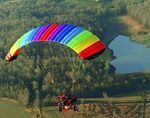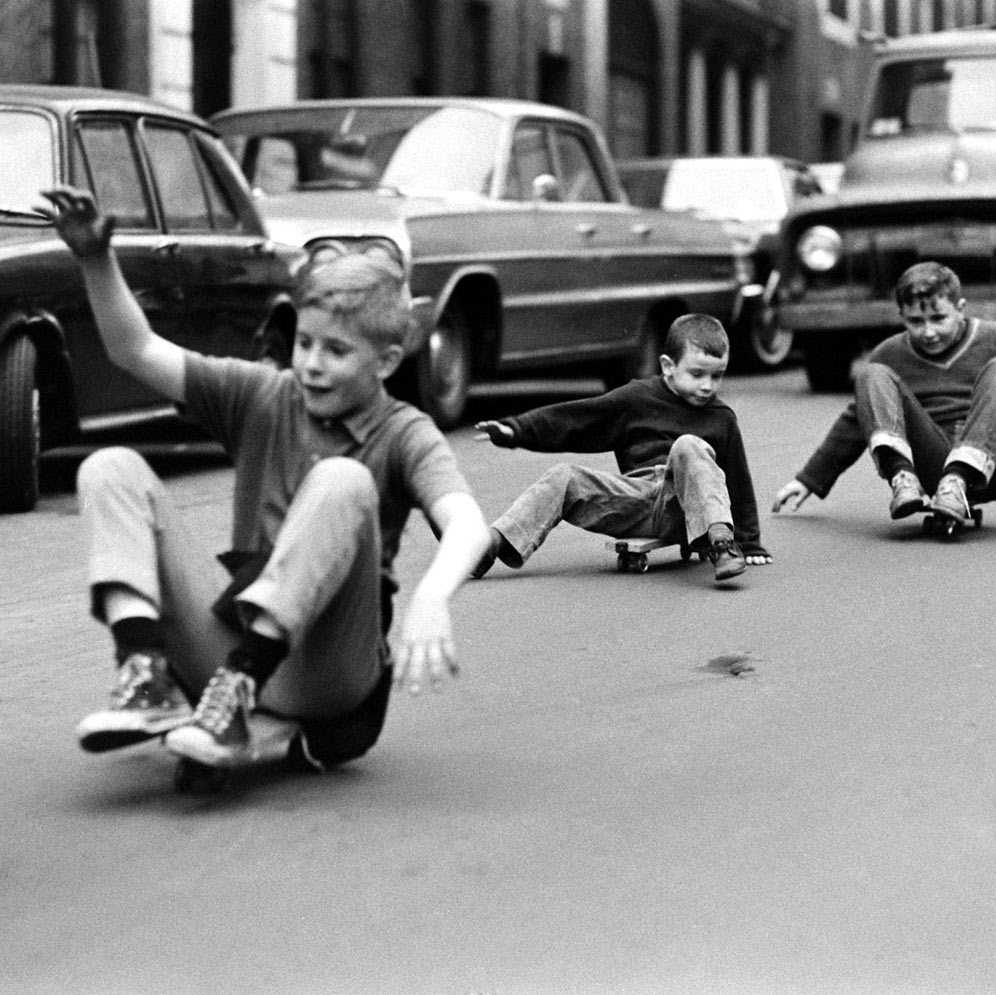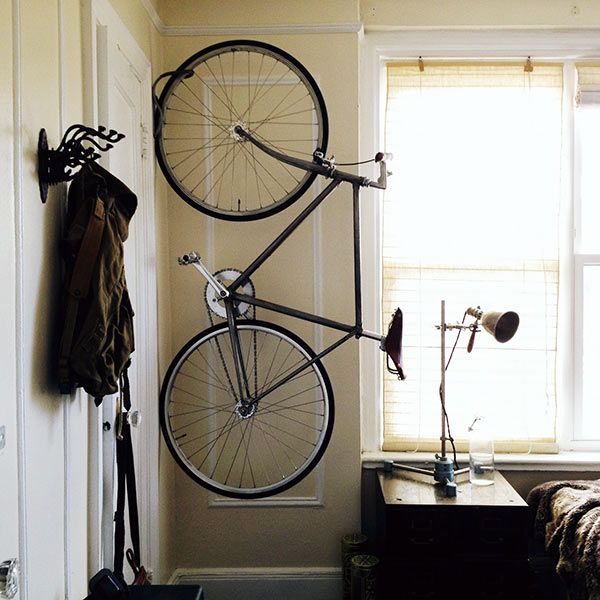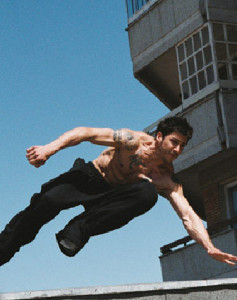 Some people think parkour is a way of moving through space. Others believe it’s a way of perceiving reality. “There are no limits,” they echo the founding father, “there are only obstacles to overcome.”
Some people think parkour is a way of moving through space. Others believe it’s a way of perceiving reality. “There are no limits,” they echo the founding father, “there are only obstacles to overcome.”
In reality, a traceur overcomes only themselves. Their own fear, weakness, lack of training, the norms ingrained in them since childhood — including the norms of movement and social conformity. They conquer the habits imposed by civilization: submission, adherence to the rules of movement, and falsely understood moral standards. They overcome the alienation toward the surrounding world and the “non-confrontational” attitudes toward society instilled in “civilized” individuals.
When people say that humans have “mastered ecology, creating a convenient world for themselves,” they often fail to realize that this very “convenient world” of cities with its streets (designed for walking), fences (not meant to be climbed), and trees (off-limits for climbing), along with its speed restrictions, has also subjugated humanity.
By accepting the conventions of modern urban civilization, we renounce nature. But is that truly necessary?
This is why “civilized people” have always lost in an honest struggle for survival in the forest to predators and other humans — like Native Americans, South Asians, Arctic peoples, African hunters, and Eastern martial artists, in other words, people who have retained their connection with nature. These individuals are capable of constantly being aware of their bodies, their movement, and their spatial positioning — even while moving quickly. This kind of awareness and the ability to move anywhere and survive any situation were once natural for skilled hunters and warriors, roles our civilization no longer values. But that’s no excuse to sit in a comfy chair and grow complacent.
For winter sports, it’s essential to stay warm. Learn how to choose thermal wear on our website.
Sheregesh is one of the most beautiful ski resorts in Russia. If you haven’t heard of it, you’ll surely enjoy our article .
Parkour for Beginners
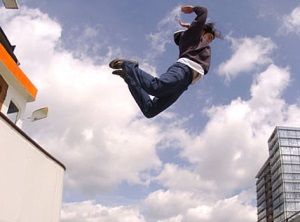 So, where does a prospective traceur who wants to learn parkour begin? They start with their motivation. Parkour requires the mindset of a hunter who, in pursuit of their prey, refuses to be daunted by obstacles or give up on their goal. Even if that goal isn’t capturing a deer but crossing a city in a straight line. Thoughts like “I can’t, it’s impossible, I won’t do it, or they won’t understand” need to leave your mind. You can’t learn parkour at home. Showboating doesn’t belong in a traceur’s mindset either.
So, where does a prospective traceur who wants to learn parkour begin? They start with their motivation. Parkour requires the mindset of a hunter who, in pursuit of their prey, refuses to be daunted by obstacles or give up on their goal. Even if that goal isn’t capturing a deer but crossing a city in a straight line. Thoughts like “I can’t, it’s impossible, I won’t do it, or they won’t understand” need to leave your mind. You can’t learn parkour at home. Showboating doesn’t belong in a traceur’s mindset either.
A traceur is a person free from all constraints, including the need to impress others or conform to their expectations of how one should (or shouldn’t) act. This isn’t a cynical opposition to society; it’s a calm resolution to live as you see fit, without hindering others from living the way they prefer. The best traceurs rarely draw attention to themselves.
A good hunter doesn’t wander the city boasting about their skills. A true hunter hunts. A true traceur moves through the city so swiftly and expertly that city dwellers can only glimpse them for a few seconds.
A traceur doesn’t perceive an obstacle as an obstacle — that’s the psychological shift. As long as someone sees a “barrier” and perceives it as such, they are not free. There’s an excellent Soviet film, Wizards, where a brilliant instruction is given on walking through walls: “See the target, believe in yourself, and disregard the obstacle.” This mindset is crucial for parkour. A traceur moves through spaces directly, as if they are inherently homogeneous and obstacle-free. Achieving this requires willpower and mental strength.
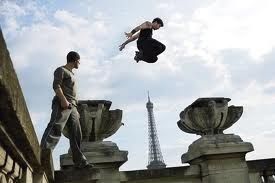 So, for anyone seeking fame or admiration in the eyes of others — sorry, parkour isn’t for you. Parkour doesn’t make a person “cool”; rather, cool people are drawn to parkour to become even cooler. We find joy in the work of our muscles, the speed, and the awareness of our resilience and versatility. And as for impressing others — that comes later, if at all.
So, for anyone seeking fame or admiration in the eyes of others — sorry, parkour isn’t for you. Parkour doesn’t make a person “cool”; rather, cool people are drawn to parkour to become even cooler. We find joy in the work of our muscles, the speed, and the awareness of our resilience and versatility. And as for impressing others — that comes later, if at all.
Parkour: A Unique Blend of Mental and Physical Strength
Parkour is a sport that demands not only a specific psychological mindset but also considerable physical preparation. This is one of those rare activities where mental fortitude, physical power, reaction speed, coordination, and the ability to accurately assess the space you’re navigating all come together. Parkour is purely about dynamic improvisation, but improvisation rooted in well-honed, automatic skills of conscious movement.
The dream of learning to fly likely came into existence alongside humanity’s ability to dream. Read about one way to realize this dream—the motorized hang glider .
If you’re planning to set out on a hiking trip but haven’t yet purchased a sleeping bag, check here . Everything you’ll need to know about selecting the right sleeping bag.
For skiing enthusiasts, we also have an article on where you can hit the slopes in Belarus: /en/mountains/skiing-snowboarding/belarusian-ski-resorts/ .
How to Become a Traceur
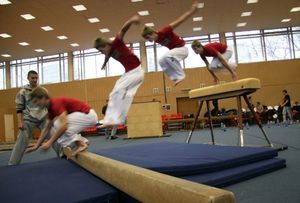 To learn parkour, one obviously needs dry, strong, and very durable muscles, flexible joints with a robust ligament system—after all, sometimes an entire body’s weight lands on a single supporting hand, while the body twists or contorts mid-jump with no support. You’ll need strong lungs capable of handling interval training, as well as legs accustomed to prolonged interval running. A firm grip with your fingers, fast reflexes, and excellent coordination of movement are also essential.
To learn parkour, one obviously needs dry, strong, and very durable muscles, flexible joints with a robust ligament system—after all, sometimes an entire body’s weight lands on a single supporting hand, while the body twists or contorts mid-jump with no support. You’ll need strong lungs capable of handling interval training, as well as legs accustomed to prolonged interval running. A firm grip with your fingers, fast reflexes, and excellent coordination of movement are also essential.
Where can you learn parkour? Nowadays, parkour clubs or at least practitioners can be found almost everywhere, so beginners should try to find experienced practitioners in their city. As the saying goes, your feet will find them, or Google will. Training alongside a team is simpler and safer—experienced masters know not only how to perform a trick but can also spot you in case of any mishaps.
You can train outdoors, in a gym, or even at home if necessary. Even if you decide to teach yourself parkour, it’s better to practice indoors first, then move on to learning real-world parkour tricks outdoors.
Attempting a complex jump or flip right away without developed motor skills and flexibility poses significant risks for beginners. Unless their physique is adequately prepared and they clearly understand the movement flow—where each arm or leg should be at any given moment during a jump—they’re more likely to end up with sprains, fractures, or bruises rather than actual progress.
What Sports Can Help You Learn Parkour Quickly?
Bodybuilding (or rather, Body Fitness)
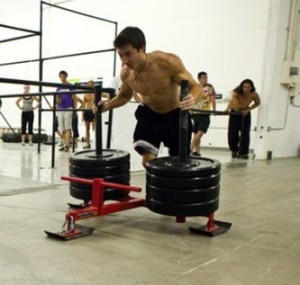 Without question, hitting the gym and working on strength equipment is a must. But the training program must be tailored specifically for parkour. A traceur has no use for the bulky, heavy, and voluminous musculature typical of a bodybuilder. Such hypertrophied muscles are often “slow,” as this type of training primarily develops slow-twitch fibers. Likewise, traditional powerlifting—which emphasizes an overly developed chest and upper-body musculature capable of pressing double one’s body weight—won’t suffice.
Without question, hitting the gym and working on strength equipment is a must. But the training program must be tailored specifically for parkour. A traceur has no use for the bulky, heavy, and voluminous musculature typical of a bodybuilder. Such hypertrophied muscles are often “slow,” as this type of training primarily develops slow-twitch fibers. Likewise, traditional powerlifting—which emphasizes an overly developed chest and upper-body musculature capable of pressing double one’s body weight—won’t suffice.
For a traceur, working out with weights matching their own body weight while focusing on endurance (e.g., 5–6 sets of 15–20 reps) is sufficient. Overall, all weight-training sessions should aim for building lean mass and developing stamina. Full-body workouts should ensure that each muscle group undergoes at least four distinct exercises, compelling them to work from different angles and under varying loads until completely exhausted. Such training is demanding and typically lasts about two hours.
This regimen will develop a lean, light body that muscles can effortlessly move through space. Additionally, it ensures comprehensive growth across all muscle bundles, including assisting muscles. It also helps avoid the clumsiness and limited strength often seen in bodybuilders, where a muscle only operates at full capacity in a single familiar range of motion. Lean muscle-building ensures exceptional endurance on the parkour course. Moreover, a well-trained body is less prone to injuries.
Special attention should be given to grip-strength exercises and the development of wrist and ankle tendons. Bodyweight exercises like push-ups, pull-ups (with varied hand positions), work on the paravertebral (deep back muscles running along the spine) muscles, and a strong focus on abs—particularly the oblique abdominal muscles—are crucial. Strengthening the hamstrings is essential, as parkour without it isn’t parkour but rather a recipe for failure.
These training programs are typically designed for hikers, climbers, and rock climbers.
You can also learn how to properly use a compass and what an azimuth is on our site. While a compass may not be as convenient as a GPS device, it won’t ever run out of battery!
For those intent on taking up mountaineering, it’s worth studying the basic mountaineering knots. In this article , we discuss them in detail.
Breathing Yoga, Acrobatics, Gymnastics
It’s crucial to complement strength training with agility and flexibility practices. Mastering proper breathing techniques through yoga can be immensely beneficial for endurance and concentration, while acrobatics and gymnastics will allow you to develop the spatial awareness and fluid movement required to excel in parkour.
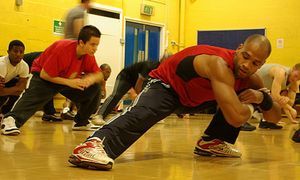
Yoga, which perfectly develops body awareness, muscle elasticity, and flexibility, teaches you how to control your breathing and maintain awareness during movement. A rare but foundational skill. Acrobatics and gymnastics help develop flexibility, agility, coordination, and spatial orientation.
By themselves, they won’t lead to any major achievements in parkour – after all, they are relatively slow-paced sports. However, without the flexibility they provide, you won’t be able to twist or maneuver your way through jumps and obstacles.
Rock Climbing
Cliffs may not quite be the same as urban walls… but the principle is similar. The skill of climbing vertical surfaces lightly on your fingertips, like a fly, maintaining balance, and being aware of more than just the patch of wall in front of your face is immensely beneficial for a traceur (parkour practitioner). Along the way, it’s a great way to break free from a fear of heights. In fact, this is one of the key skills in parkour.
Running, Skiing, and Obstacle Course Training
Speed of movement is the foundation of parkour. The ability to run, quickly accelerate, gain speed before executing a complex move, and jump over obstacles with or without support is, in essence, what parkour is all about – though this represents just the basic horizontal-level parkour.
It’s crucial to master proper running technique, learning to fully utilize the foot as a shock absorber. Training is best done on uneven terrain using interval running techniques (one minute of fast running, followed by three minutes of slow jogging, then again 1–3 minutes of fast running… followed by a quick set of push-ups, sprinting again, and so forth).
Interval running simulates an obstacle course for the heart, akin to a real parkour track. The heart must be capable of operating under varied conditions, quickly adapting to changing tempos, loads, and pressures. While bodybuilding builds strength and endurance, climbing and running develop the mobility skills for which we prepare the body in the first place.
Mountainous or hilly areas are ideal for flying a paraglider. But a motorized paraglider is more accessible even for those living in flat regions.Thinking about buying a longboard? Check out this page to help select the most suitable one.
You don’t need to travel to the mountains to try rock climbing. Moscow itself boasts excellent climbing gyms .
Dance or Martial Arts
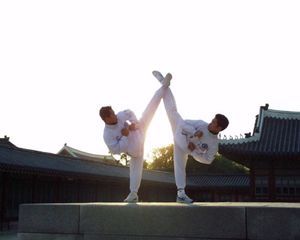
These two arts (or sports) are grouped here solely based on how they enhance our motor and analytical skills. Both martial arts and partnered dance teach us how to work closely with a partner, constantly adapting to an unknown variable – their relatively unpredictable movements – while synchronizing with them, without losing your own movement line or overall situational awareness.
Whether it’s sparring or dancing, both activities build stamina, patience, and the ability to observe and identify the most advantageous movement trajectory in real-time. In other words, sparring partners teach traceurs the skill of interacting with obstacles on a course, helping them develop a keen sense for evaluating rapidly changing spatial conditions, the nature of obstacles, and how to instantly adapt by choosing the correct movement.
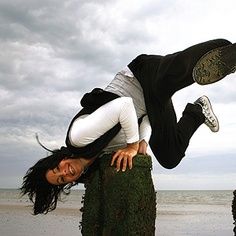
Regular and rational nutrition, along with proper sleep routines, are critical for parkour. You can’t maintain a well-functioning muscular system while snacking on chips sporadically and suffering from chronic sleep deprivation. It’s also advisable to break habits like smoking or drinking. Nothing personal here, just science: nicotine causes spasms in smooth muscles. Smoking a cigarette right before hitting a track or training session guarantees a strong vascular spasm (narrowing) for about an hour or more. This means that during running, your heart will have to heroically push blood through constricted vessels, leading to oxygen deficiency and unnecessary stress on the heart muscle.
After training, your muscles need an increased amount of oxygen for an hour to recover and heal. A cigarette immediately after exercising deprives them of this vital recovery time. As for alcohol, remember that it taxes the liver, which will already be tasked with processing the extra waste produced after physical activity. If you don’t care about your liver, think about this: even just 100 grams of vodka stops testosterone production in the body for 24 hours. Without testosterone, there are no muscles and no spunk.
Ultimately, happiness lies in parkour, not in its substitutes.
